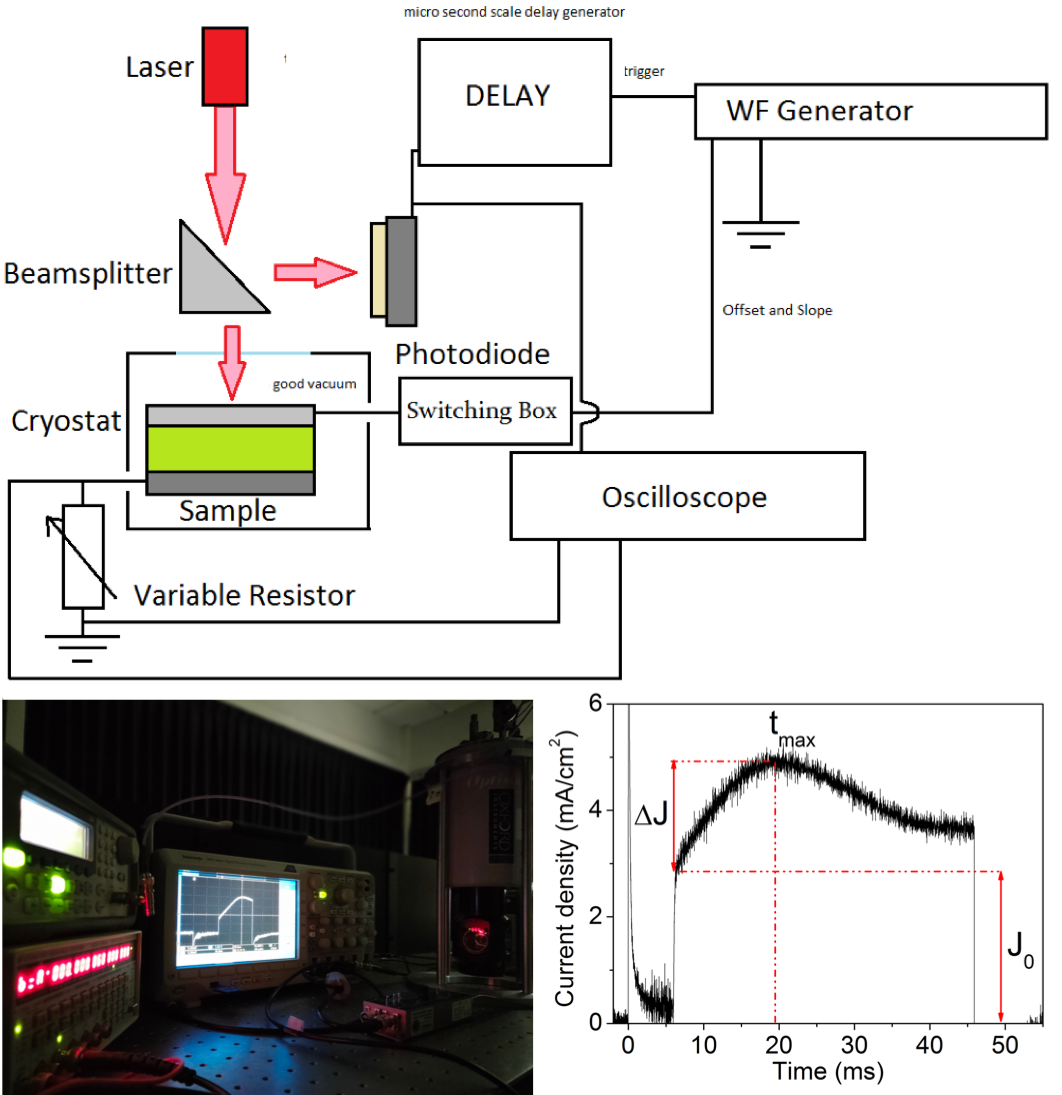Explore the offer
Upscale to Intermediate TRL / OPTO-ELECTRONIC CHARACTERIZATION
Charge Extraction by Linearly Increasing Voltage

Charge Extraction by Linearly Increasing Voltage (CELIV) is a popular technique usually used to estimate charge carrier mobilities in organic and perovskite based optoelectronic devices. A displacement current generated within the active layer by an external trigger can be recorded and used to extract significant information about the material itself, such as mobility, doping, relative permittivity, recombination coefficient.
We can perform various modifications of the CELIV technique: Dark-CELIV, Photo-CELIV, Injection-CELIV, and MIS-CELIV. The set-up is flexible enough to convert to CELIV from Time-of-Flight (TOF) measurements (and vice versa) very rapidly so that it can be used for many different optoelectronic devices with minimal alterations. Figure on the right shows a schematic of the CELIV set-up used.
Measurements can be performed under different environmental conditions, such as in air, under inert atmosphere (N2) or in vacuum, by placing the device inside a customized cryostat in a sample holder which supplied signal to the contacts and gave light access to the device for photo-excitation. The light source is a pulsed LASER tunable over the UV, VIS and NIR spectrum to give the appropriate excitation to a wide range of materials. Finally, measurements can be performed in a temperature range varying from 77 K up to 400 K.

Available instruments
Select instruments to view their specifications and compare them (3 max)
Lab's Facility
Lecce